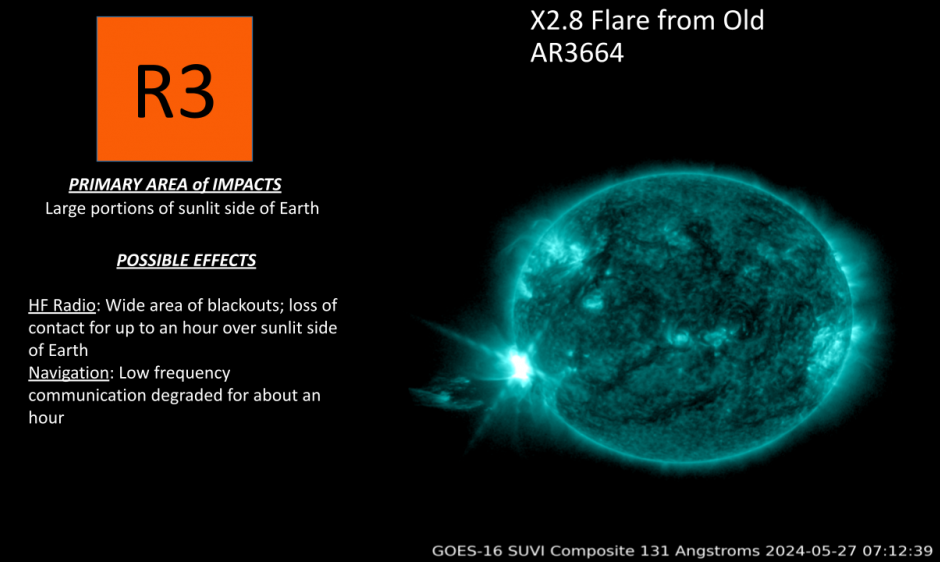The active region or cluster of sunspots responsible for the most intense geomagnetic storming in two decades has rotated back into view. It has fired off another X-class solar flare, which is associated with a Coronal Mass Ejection (CME). The CME will not strike the Earth, but severe space weather may be ahead.
AR 3697 erupting in an X2.8 flare. (Image Credit: NASA/SDO/News9).
New Delhi: The Space Weather Prediction Centre (SWPC) of the US National Oceanic and Atmospheric Administration (NOAA) has observed an X2.8 flare erupting from the old sunspot cluster AR 3664, which now bears the designation of AR 3697. A coronal mass ejection (CME) was associated with the Solar flare, but considering the location of the active region at the edge of the eastern limb, the hot plasma from the Sun is expected to miss the Earth.

A radio blackout alert associated with the flare issued by the SWPC. (Image Credit: NOAA).
AR 3664 was responsible for a total of twelve X-class solar flares between 8 and 15 May, 2024. The sunspot cluster continued to fire intense solar flares aimed straight at the Earth, even as Earth was undergoing the most intense geomagnetic storming in two decades. AR 3664 was also responsible for an X8.7 flare just as it was rotating out of view, which is the strongest flare observed in the current Solar Cycle.
AR 3664 has now survived the journey around the far side of the Sun, and has now rotated back into view, now bearing the designation of AR 3697. The sunspot cluster was possibly responsible for a hello CME with a far side eruption last week. Another sunspot cluster responsible for a series of intense flares early in the month, AR 3663 has also survived the trek across the solar far side, and now bears the designation of AR 3691.
What to expect in the days ahead?
Both AR 3691 and AR 3697 can potentially erupt in additional X-class solar flares, which may be associated with CMEs. The X-class flare observed from AR 3697 caused a brief blackout of high frequency radio comms on the sunlit side of the Earth. While most of the active regions on the Sun are stable and quiet, AR 3691 remains magnetically complex, and continues to erupt in C-class flares.
A shock influence from the CME erupting from AR 3697 can potentially reach the Earth in the days ahead, causing geomagnetic disturbances. The forecast from SWPC is that solar activity will continue to be elevated till at least the end of the month, with a chance for isolated X-class flares and associated radio blackouts.






